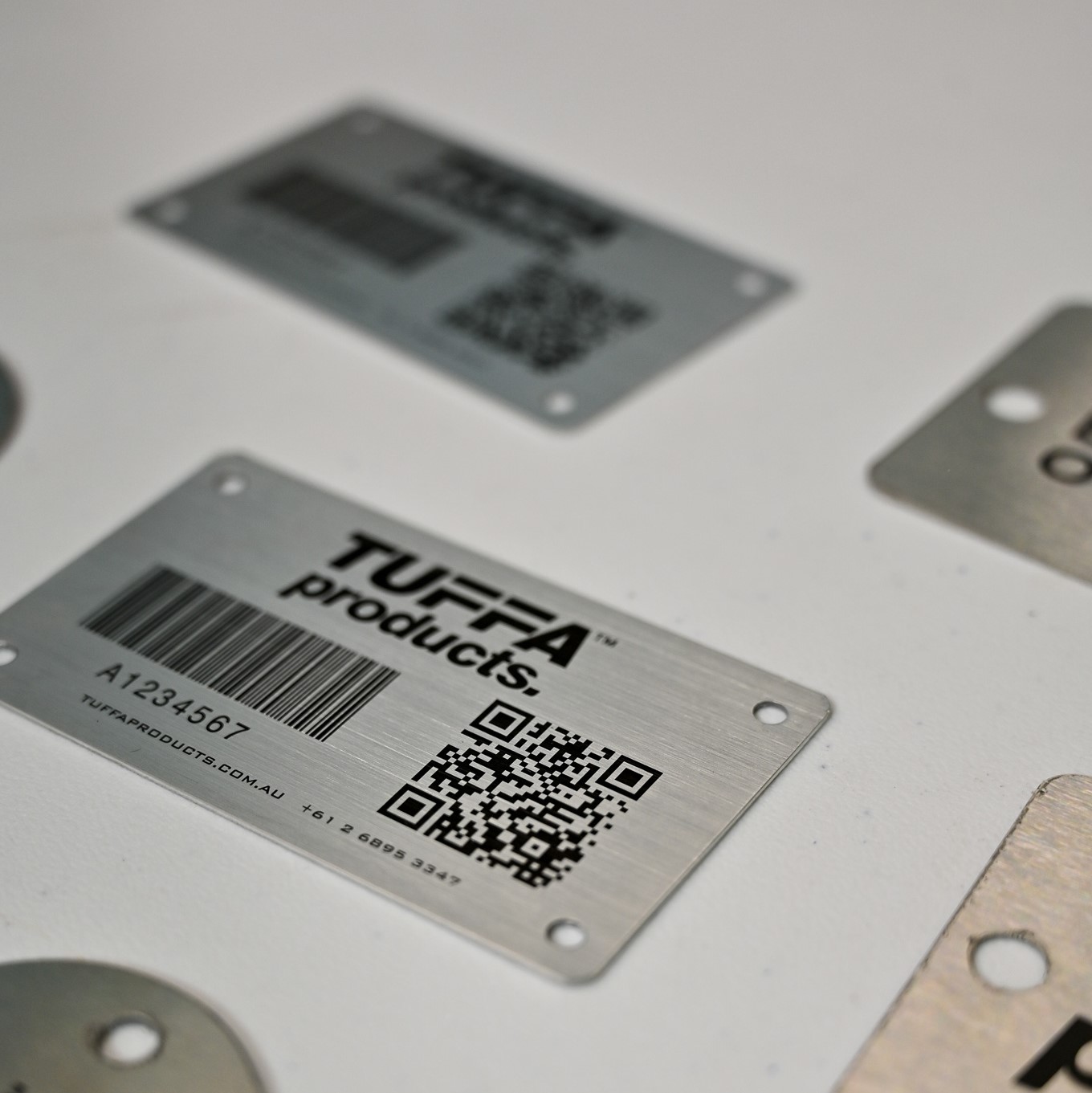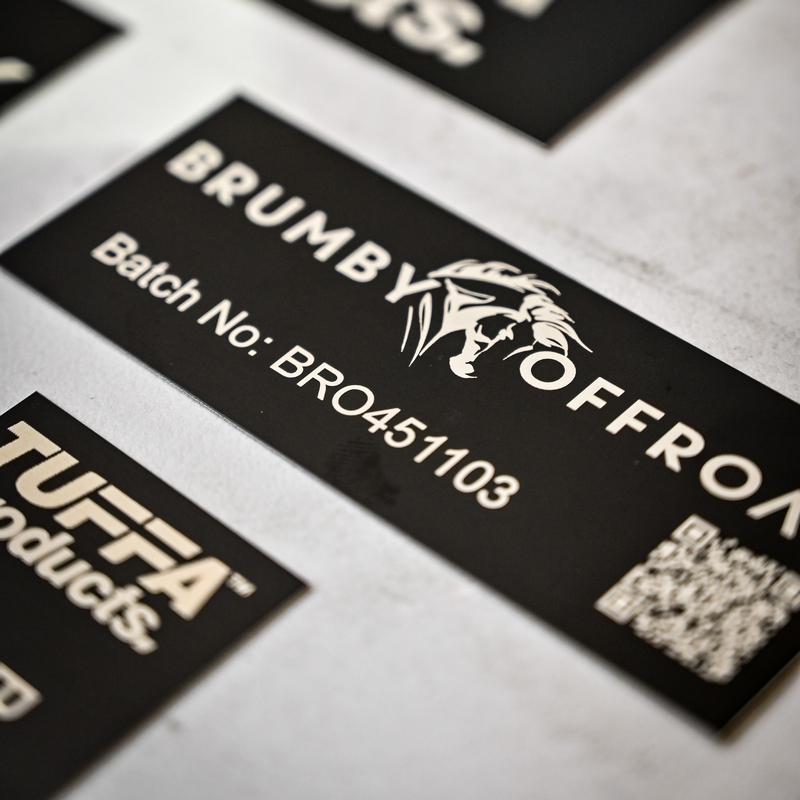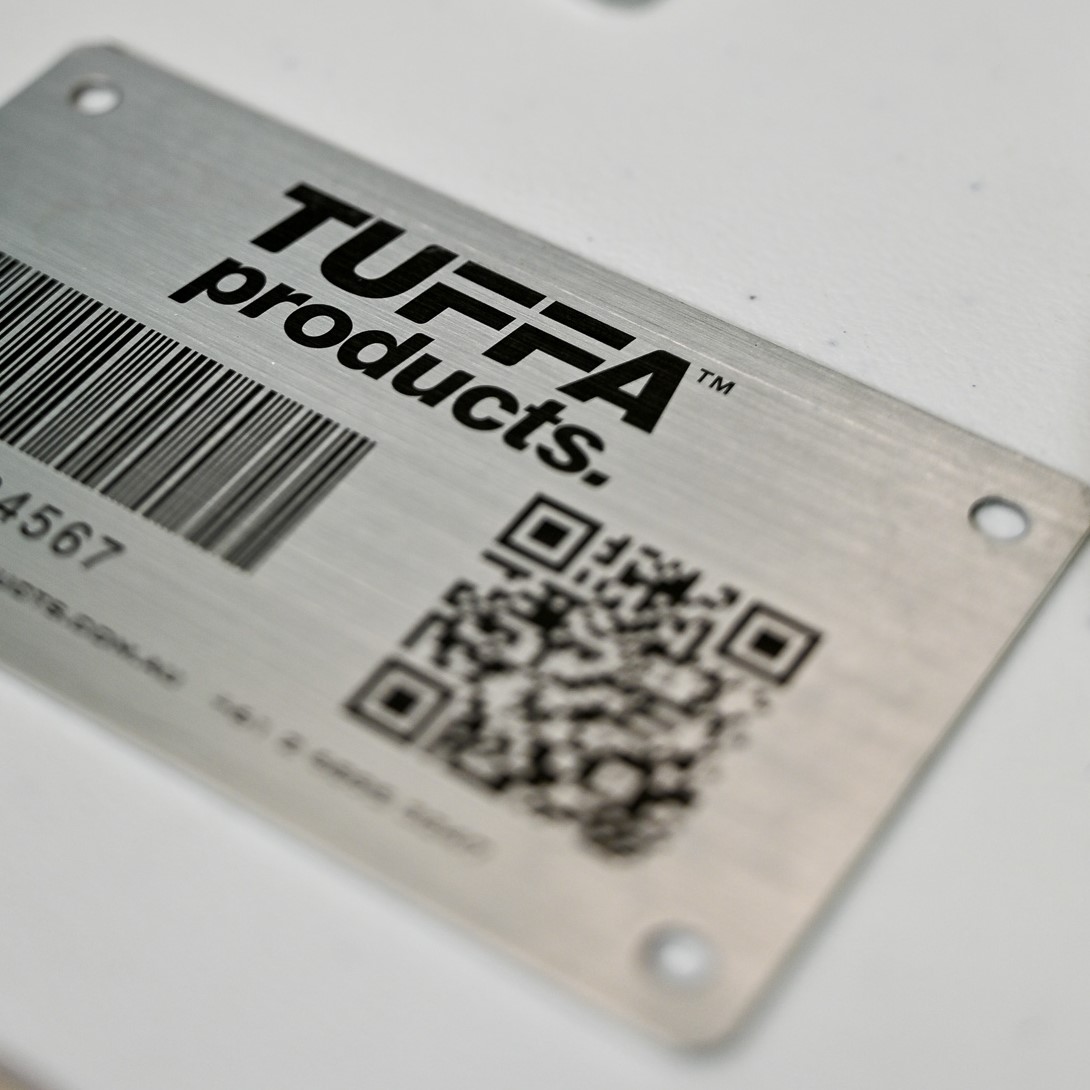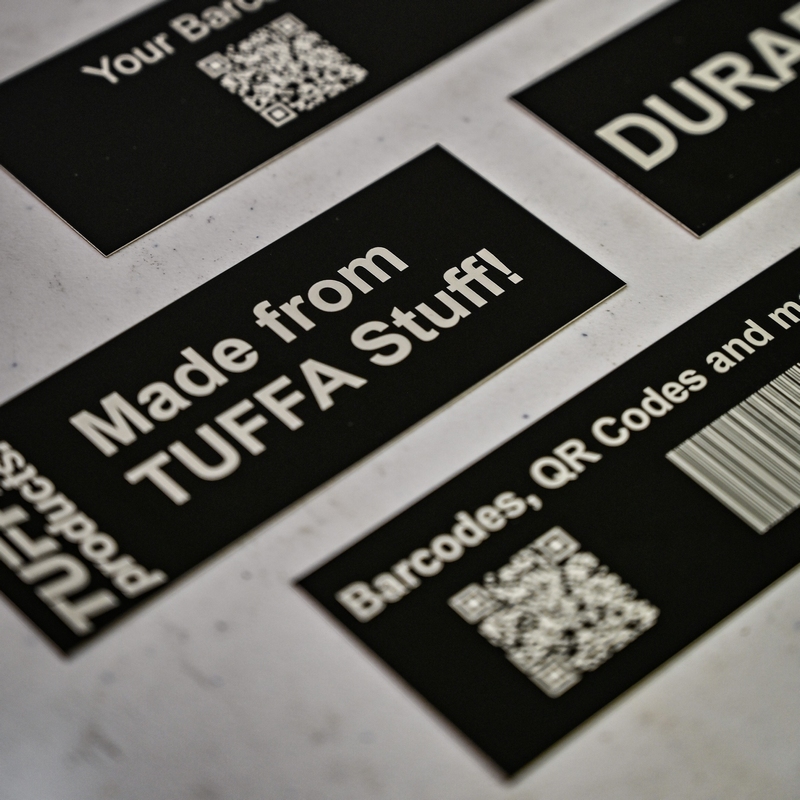Barcodes vs QR Codes
Which Is Better for Your Asset Plates?

Keeping track of inventory can be a taxing process. For large businesses, there is nothing more important than having processes in place that can be trusted.
So, for tracking inventory, you might have found it handy to attach an Asset Plate to every item going through your manufacturing system. This allows staff and customers to track the items as they progress, uncovers bottlenecks and other issues, and can be beneficial to keep track of efficiency and productivity.
The most common tracking systems available are barcodes and QR codes, and simply put, QR codes are just two-dimensional versions of barcodes.
But, if you’re a savvy spender, you might be wondering what the benefits of a QR code over traditional barcodes are (if any!). As a business owner, however, you know that there’s no use doing something if you’re not going to do it properly. So, it’s important to consider what kind of information (and how much) your business needs to keep track of. This will help you decide which tagging option is going to perform better for you.
After all, there’s no use buying a dairy cow if you don’t need milk.
To start us off, let’s take a look at Barcodes:
What is a Barcode?
Put simply, a barcode is a horizontal, one-dimensional code that stores information. Information such as price and weight of a product, date of manufacturing and expiry, name of manufacturer etc. is all stored within its black lines. The black lines that we recognise as a barcode all have varying thicknesses and different numbers attached. These lines need to be scanned at the right angle for the information to be read.

What are they used for?
Typically, barcodes are used for products that need to identify price and expiry. They’re therefore quite common in supermarkets and other retail stores with high volumes of inventory.
But, what about QR codes?
QR codes might seem like a new invention, but they’ve actually been around for over 25 years. However, it wasn’t until 2010 that they were able to be read by mobile phones, creating traction amongst the general public.
What is a QR Code?

A QR code is a type of matrix code, made up of black and white squares and dots. They typically store website URLs, email addresses, contact data and text information, and are constantly evolving to offer more innovative uses.
Unlike barcodes, these codes are two-dimensional, meaning they can store information both horizontally and vertically. Their rows and columns of information combine to make a grid of modules. As a result, QR codes can contain a lot more information than barcodes of equal size.
What are the benefits of a QR Code over a Barcode?
- QR codes can be easily read. This is because they have correction capabilities that mean even if the code becomes scratched or damaged in any way, it will have a higher chance of being read than a damaged barcode would. They can also be recognised from any angle, whereas barcodes have to be scanned in a straight line.
- They hold more information. A LOT more. Due to their two-dimensional nature, QR codes can offer more flexibility for your business, as they allow for more freedom for the amount and type of information you store. If your business is planning on expanding or redirecting, QR codes could be a handy tool to fast-track future innovation plans.
- They can be scanned from your phone! Yes, that’s right – QR codes are super easy to implement and use, especially if your mobile phone has a QR code scanner built into its camera.
- QR codes uniquely identify items. The barcodes on items that we purchase are not unique. If you have 5 of the same items, chances are the barcode will be the same for each of them. QR Codes, on the other hand, give each individual item a unique code, which makes keeping track of inventory a highly accurate and simplified process.

TUFFA’s Asset Plates are able marked with either a QR code or a barcode, so, when deciding on which type of tracking system to use on your Asset Plates, the most important things to consider are:
- Amounts of information you need to track
- Type of information you need to track
- Direction of your business
Contact the sales team at TUFFA if you require further information or advice!

